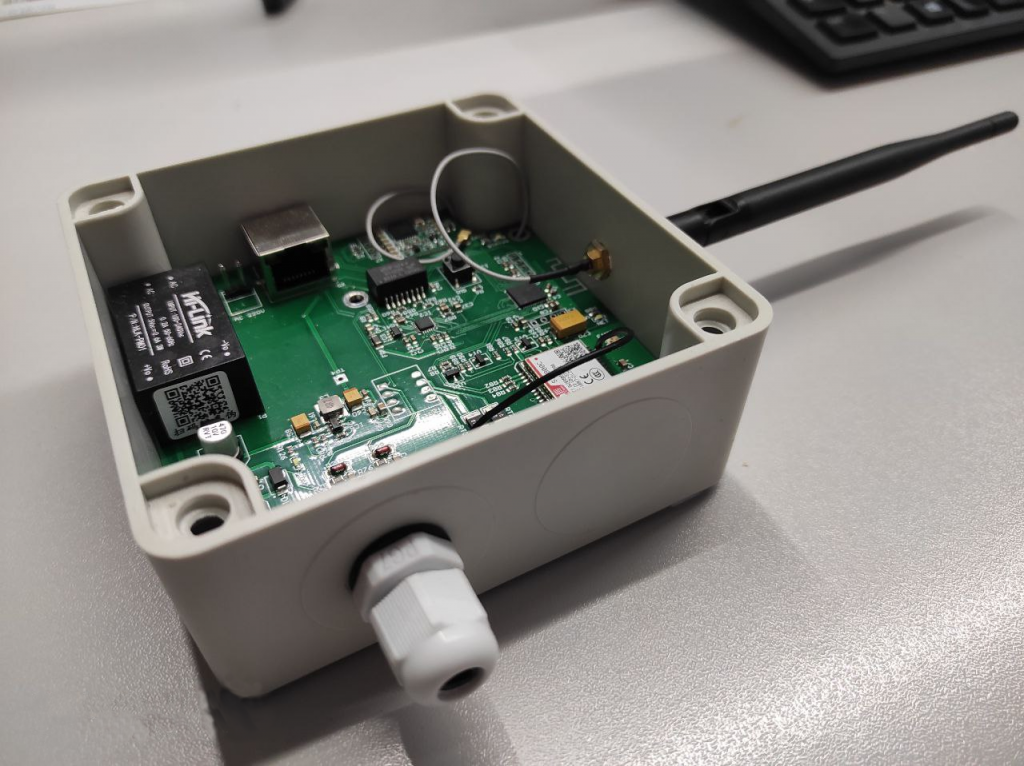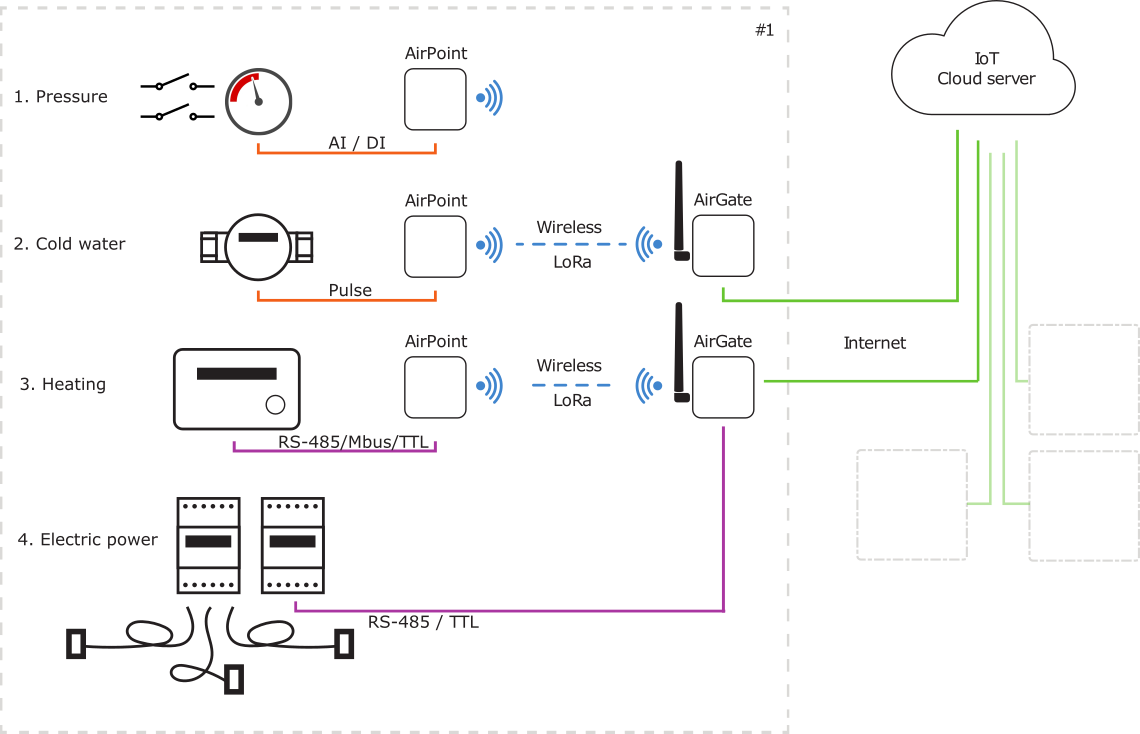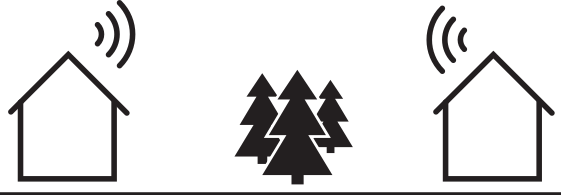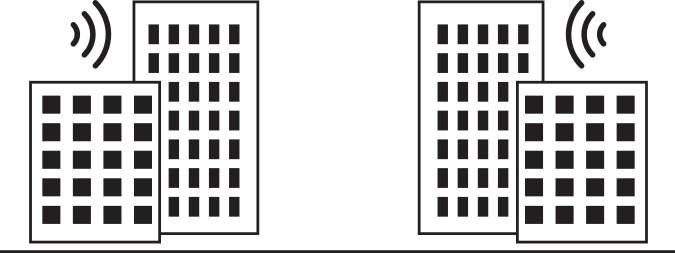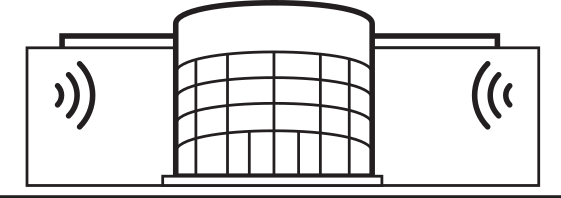The gateway is used to broadcast data received from 7bit AirPoint wireless modules via the Lora radio channel or from built-in interfaces (RS-485 / Modbus TCP – via a local network or the Internet) to the MQTT broker.
Unlike the basic 7bit AirGate module, the Combo version combines many more functions:
- the housing has an increased degree of protection
- power supply from the network ~220V
- GPRS module
- serial port for direct interrogation of automation devices
- Lua scripting environment – turns a node into a remote wireless controller

